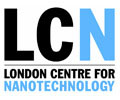
“Executives from Heptares Therapeutics (Welwyn Garden City, UK) and O2h (Cambridge, UK) announced today an extension of the agreement under which O2h provides multi-FTE -synthetic chemistry services to support discovery programmes at Heptares… Heptares is a drug discovery company focused on identifying novel drug candidates targeting validated G-protein-coupled receptors (GPCRs) in several disease areas. Heptares was founded in 2007 and its StaR technology arose out of the pioneering work of Heptares’ founding scientists at the MRC Laboratory of Molecular Biology (Cambridge, UK) and the National Institute for Medical Research (London, UK).” More…


